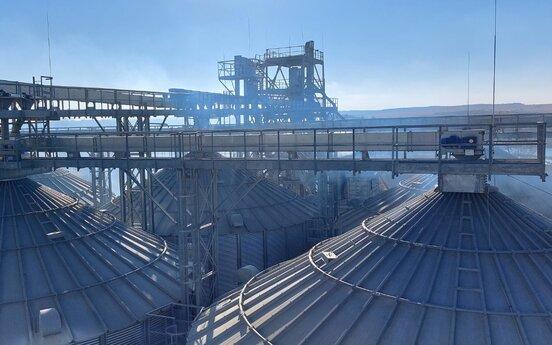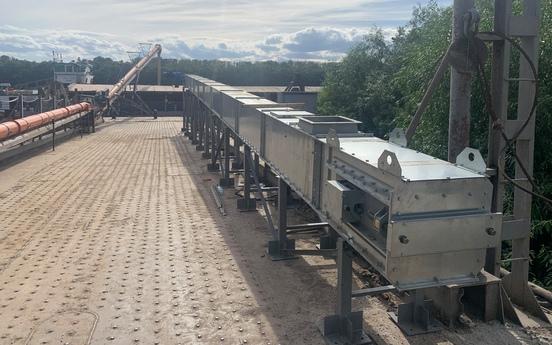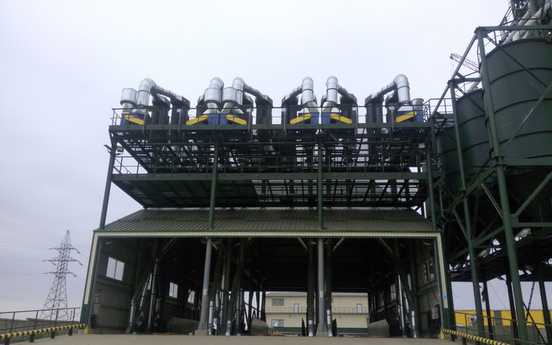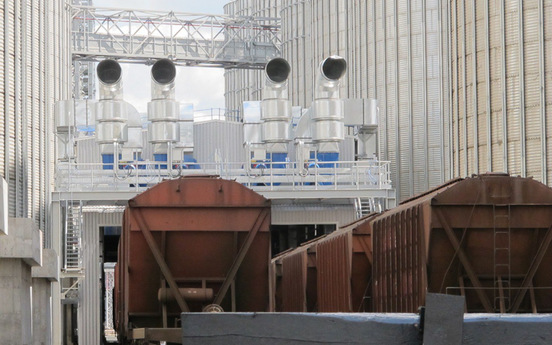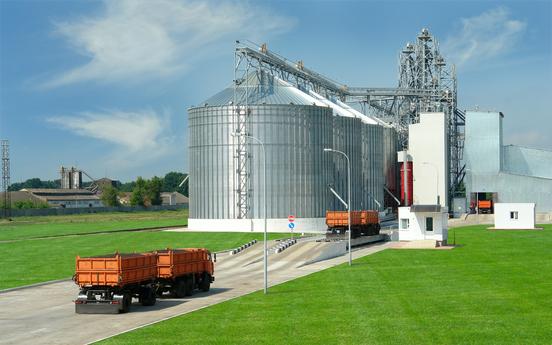Optimal microclimate in a grain storage facility: the role of ventilation

Proper storage of such an agricultural resource as grain is an important process that requires the use of special equipment. If the temperature or humidity level is not maintained, the grain loses its quality and is prone to self-heating, germination, mold or pest infestation. Ventilation plays a central role in ensuring a stable indoor microclimate - it is not just an air supply, but a complex system that is responsible for creating and maintaining optimal storage conditions. In this article, we will look at how the ventilation system works, what types of ventilation exist, and what economic benefits it brings.
Basic requirements for the microclimate in a grain storage facility
The microclimate of a room is a combination of air parameters: temperature, humidity, and air movement. For grain, the most favorable temperature is between +10 and +15°C and humidity of 12-14%. If the temperature of the grain mass rises and the humidity exceeds the permissible limits, the process of self-heating begins, microflora develops, and pests become more active. The temperature in the storage tanks can be conveniently monitored using the smart.thermometry software package.
Thus, ventilation ensures constant air exchange, removes excess moisture and CO₂, and prevents condensation. It is especially important to comply with these conditions when storing grain in silos and hangars, where the microclimate may differ by zone.
The microclimate in production facilities where grain is stored differs by zone and depends not only on the air temperature but also on the humidity of the grain mass itself, the heat capacity of structures, and the availability of ventilation ducts. Ventilation equipment must maintain the same conditions in all layers of the product, especially during transitional seasons when temperature changes are possible.
Types of ventilation
It is worth considering the main types of ventilation and how they differ. Ventilation can be natural, mechanical and combined.
- Natural ventilation works due to the difference in temperature and air pressure between the outside and inside. It is the cheapest but least effective type of ventilation, especially in isolated rooms.
- Mechanical or forced ventilation uses a fan that forces or exhausts air. Such a ventilation system allows you to precisely adjust the speed and volume of air exchange.
- A combined ventilation system combines elements of both approaches: it works effectively in adverse weather conditions, reduces energy costs, but requires proper design.
The types of ventilation are selected depending on the size of the warehouse, the design of the storage facility, and the type of storage: bulk, bagged, or containerized. Automatically controlled elevator ventilation systems are particularly effective. When it comes to ventilation in the agricultural sector, it is important to correctly distinguish between all existing types of ventilation and choose the most cost-effective one.
Among all the solutions for grain storage, artificial ventilation is considered to be the most effective. Its essence lies in the fact that air is supplied or pumped into the room by means of fans and air ducts, regardless of external weather conditions. This ensures constant control over temperature and humidity at any time of the year.
How to properly organize ventilation in a grain storage facility
The organization of grain storage ventilation includes several critical stages:
- Design. Analysis of the type of grain storage facility, grain volumes, and climatic conditions. This takes into account the shape of the room, the method of grain storage, and the heat capacity of the structures.
- Selection of equipment. The use of modern fans, recovery systems, air ducts, thermometers, moisture meters.
- Installation of the ventilation system. It is important to install air ducts in the area of the bulk of the grain, to organize air flow from below, and exhaust from above.
- Aeration. Ventilation systems for grain drying provide temperature reduction and even air distribution.
- Control. Automatic systems with temperature and humidity sensors allow you to respond to changes in real time.
Corrugated ducts are often used in horizontal grain storage facilities. In vertical silos, ventilation ducts are located in the base of the silos or under the floor.
Forced ventilation of silos is a standard for modern elevators. In such structures, ventilation ducts are laid at the base of the towers or underground to ensure a uniform supply of air deep into the grain mass.
Mistakes in organizing the ventilation system
Typical shortcomings that lead to grain spoilage:
- Use of an insufficiently powerful fan;
- Ignoring the need for local temperature control;
- Lack of or incorrect location of air ducts;
- Lack of cleaning of filters and air;
- Too infrequent monitoring of grain condition;
- Neglect of the peculiarities of ventilation of different types of premises (hangars ≠ elevators).
Even the best system without maintenance becomes a threat. Elevator and warehouse ventilation systems require scheduled inspections, filter replacement, and sensor calibration.
Monitoring of grain storage conditions in warehouses
For the ventilation system to work efficiently, you need to monitor the temperature of the grain weekly at different points in the storage facility – in the center and at a depth of 0.5 m. If you detect a temperature increase of more than 2°C between two measurements, you should immediately turn on the ventilation. If the air smells of mold, this is the first signal of spoilage, and the system should be kept on until the source is eliminated.
Grain Capital recommends regular phytosanitary control, the use of pest traps, and cleaning the ventilation ducts from dust.
Economic effect of proper ventilation of premises
Investments in ventilation systems pay off quickly. The loss of 1% of grain weight means tens of thousands of hryvnias on an elevator scale. Forced ventilation:
- Prevents product spoilage;
- Allows grain to be stored longer without deterioration in quality;
- Reduces energy consumption thanks to EC motors;
- Enables automatic control and metering;
- Increases the profitability of the entire storage chain.
Conclusion
Ventilation is not a technical formality, but a strategic decision. Choosing the right ventilation system, regular monitoring and maintenance is the key to safe and profitable grain storage. The ventilation itself, its types by mode of operation, direction of air flow, and level of automation, if chosen accurately, will help to achieve effective crop preservation. Today's technologies allow us to automate all processes, from air supply to real-time temperature and humidity analysis. And the sooner an agricultural enterprise implements these solutions, the lower its losses – both financial and reputational – will be.


